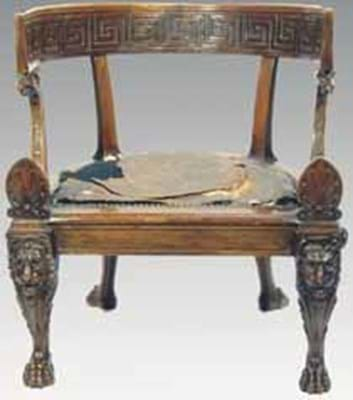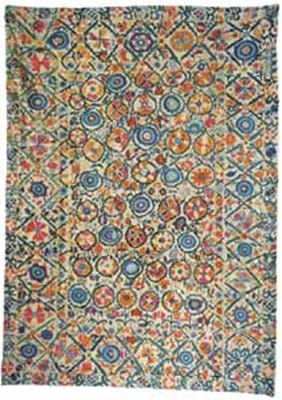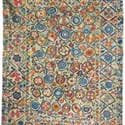With its Greek key hoop rail, griffin-head supports and lion-paw feet, it had obvious links with Thomas Hope, although auctioneer Ben Lloyd was happy with his catalogue description suggesting this was a creation of the Arts and Crafts period rather than the early 19th century.
However, the Cotswolds dealer who tendered the winning £3400 - way above the very modest £200-300 estimate - was of a different opinion.
The Cotswolds trade also bought a George III Chippendale style mahogany urn or kettle stand with open fretwork to the gallery, the angle brackets and the stretcher and blind fret to the four square section legs.
Although prices for lesser examples of the form have suffered as their use has become obsolete, this was one for the purist market and it made £3700.
Just three lots into the sale was a very fine Suzani that had been bought by the mother of the vendor at a house sale at Serlby House, the South Yorkshire seat of Lord Galway in 1942.
There are around a dozen major types - Suzani simply comes from the Persian word for needle - but, at a guess, this wall hanging, with its multitude of small rosettes and medallions, was made in the Bukhara area of Uzbekistan sometime during the first half of the 19th century.
The incredible array of the various colourful floral and foliate elements made this panel, measuring 7ft 3in by 5ft 2in (2.21 x 1.57m), particularly attractive to the specialist trade to whom it sold at £4300 (estimate £1500-2500).
A blue john urn of shallow campana form, 5 1/4in (14cm) high, raised on a square marble plinth had some restoration, but sold at £1850 (estimate £400-600) while there was competition to £2200 (estimate £500-700) for an 18th century French celestial globe by Fortin, Paris dated 1770 raised on an ebonised pearwood stand, 15in (38cm) high.
Dealer backs belief in Regency chair at ten times the estimate
THE rare and unusual mid-18th century mahogany Windsor chair pictured on the front page of Antiques Trade Gazette No 1643, June 12, was not the only enigmatic armchair in Mallams' (15% buyer's premium) April 22 sale. The supporting cast to that £23,000 chair – an unusual hybrid combining the features of the English country chair with the timber and the modeling of urban cabinetmaking – included a Egyptian Revival walnut tub chair.








